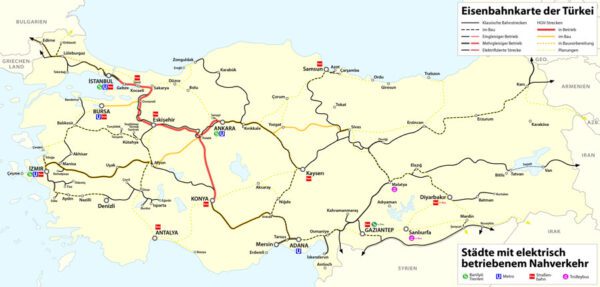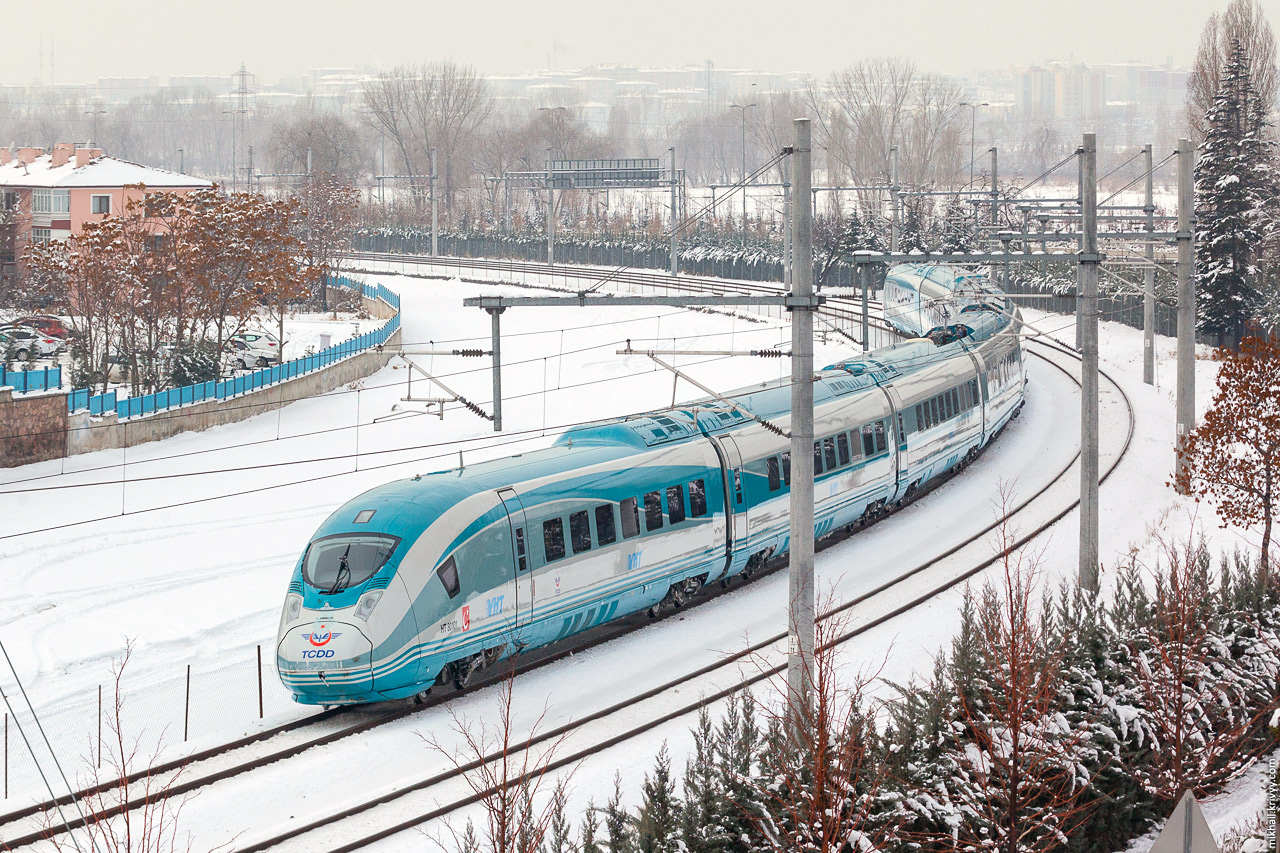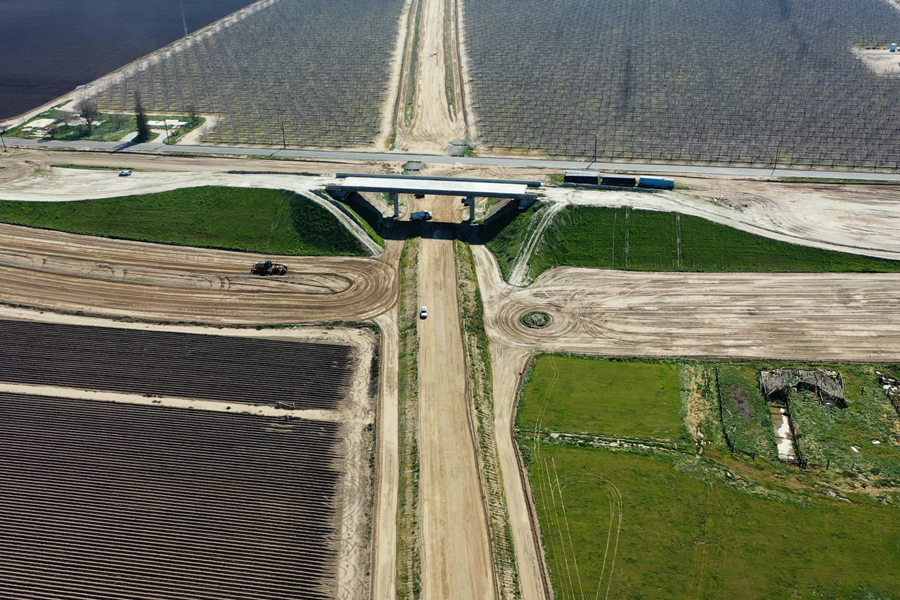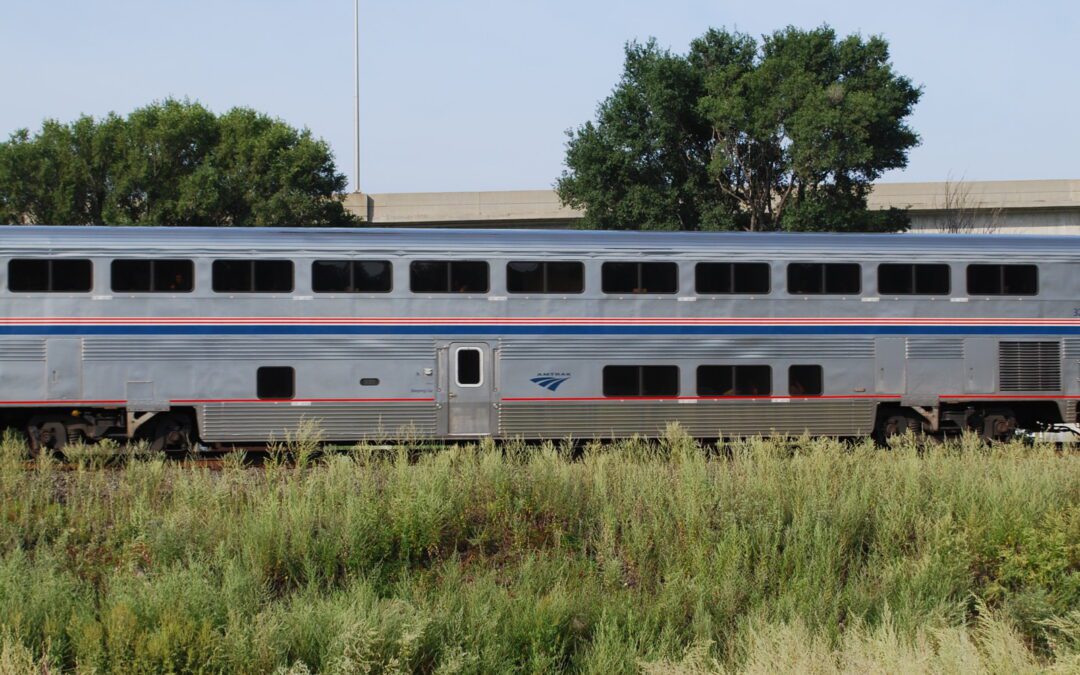California will expand and accelerate high-speed rail project with more funding and new partnerships, CEO says CEO Ian Choudri aims to accelerate and expand construction on the San Francisco - Los Angeles high-speed line in 2026, marking a major milestone in the...
Turkish State Railways recently completed record-setting excavation work on a tunnel that will be part of its high-speed rail network.
The 2.2-mile tunnel is one link in a 316-mile line that will connect Izmir—Turkey’s third largest city, situated on the Aegean Sea—with Polati, a city about 50 miles southwest of the Turkish capital, Ankara. Polati and Ankara are already connected via a high-speed line. That means it will be possible to travel all the way from the capital to the Aegean coast on high-speed trains.
The tunnel will have two levels. The upper level will carry the tracks while the lower level will accommodate emergency vehicles. The line will reduce the overall travel time by rail between the Izmir and Polati from roughly 14 hours to 3.5 hours, with five intermediate stops. Driving time is 6.5 hours. The line will require 21 viaducts and 25 tunnels. Work on it is about 40 percent complete.
Using a machine built by the Ohio-based company Robbins, workers on the tunnel recently set world records for boring advances by a 13-14 meter diameter machine in mixed ground in a single day, week, and month. The advances were 28.5 meters, 133.2 meters, and 345.6 meters, respectively. The work took a total of 206 days.

Rail transport map of Turkey
The tunnel excavation—and Turkey’s high-speed rail projects generally—are important for three reasons.
First, they underscore the opportunities that the growth of high-speed rail worldwide have opened up for U.S. manufacturers. A 2015 analysis found that more than 200 companies in the U.S., located in 32 states, were involved in manufacturing locomotives or major components and systems for them. That’s just locomotives. HSR drives demand for precision and high-tech manufacturing across a wide range of industries—as the case of Robbins, noted above, makes clear. Trains help build a country’s manufacturing base.
Second, Turkey’s world record is a good reminder that the supposedly huge obstacles to U.S. high-speed rail are very solvable—and are being solved, right now, across the globe. Critics of California’s HSR project cite the tunneling that will be required through the mountains south of San Francisco and north of L.A. as a huge barrier to completing that project. But Turkey is building 25 tunnels for just the Izmir-Polati line—and it’s setting world records in the process. More examples: The Gotthard Base tunnel in the Swiss Alps is 35 miles long and runs 8,000 feet below the mountain peaks at the deepest point. And the Brenner Base Tunnel—when it opens later this decade, connecting Austria and Italy—will become the longest rail tunnel in the world, at roughly 40 miles.
The takeaway? We can do this. There are great examples worldwide to learn from. And we have plenty of incentive to do so.
Third, Turkey’s example shows that the appeal of HSR is strong, broad and growing—well beyond just the countries usually associated with it.
By 2025, Turkey expects to more than quadruple its high-speed lines versus 2020 levels—from roughly 745 miles to more than more than 3,400 miles. (The overall railroad network will be roughly 11,200 miles.) Turkey’s first HSR line opened in 2009, showing just how rapidly a network of high-speed trains can develop once they’re given a chance and begin delivering results.
The director of the agency that operates Turkey’s trains recently wrote that trains are “the transportation system of the 21st century” and the “backbone of our transport system.” The data regarding who uses trains in Turkey back up that claim: 40 percent of riders are tourists, 33 percent are commuters, and 22 percent are students.
Get to work. Get to school. Get away. Grow the economy. High-speed trains open up lots of new options and opportunities. The case of Turkey confirms it. The U.S. should take note.
The Latest from HSRA
Our Latest Blog Posts
Check out the latest news, updates, and high speed rail insights from our blog!





